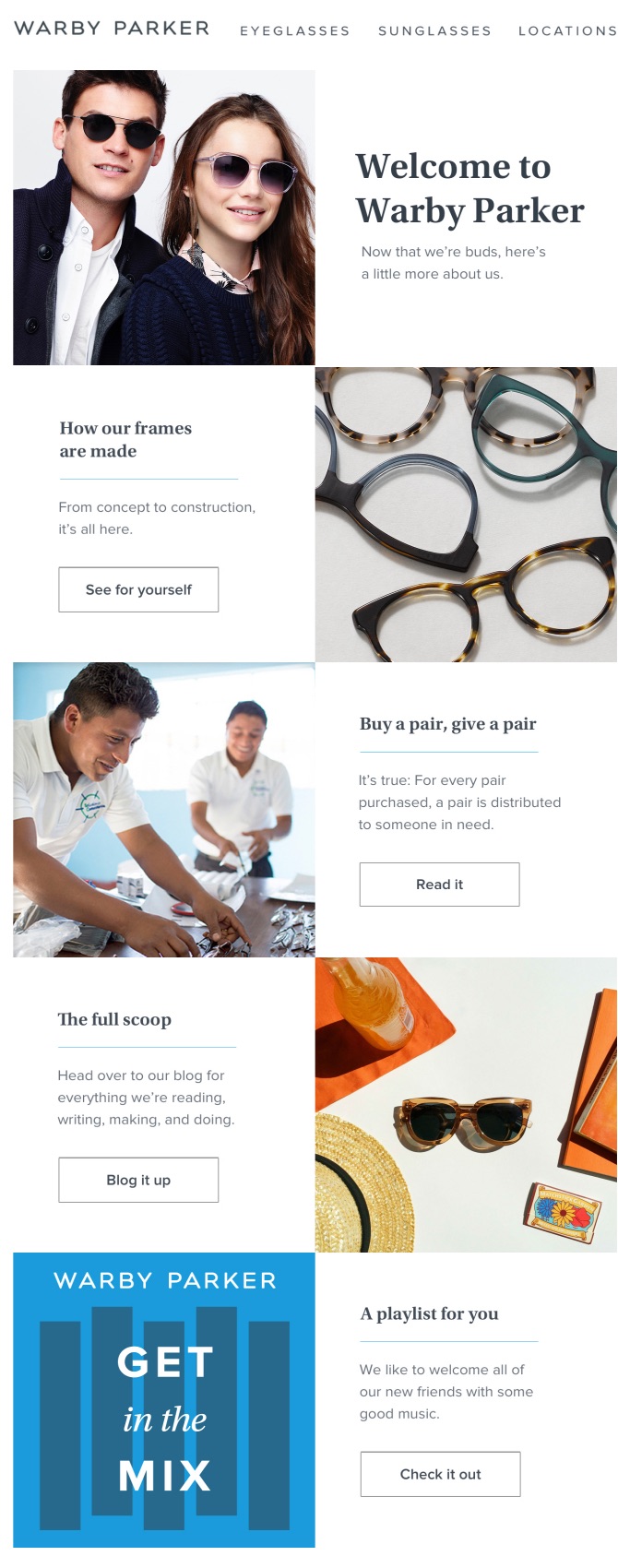This is a guest post from Mike Kilburn at Novi.Digital.
In the early days of digital marketing campaigns, emails were a must for any business, and for the most part, they were incredibly effective.
As other marketing channels have emerged, however, there’s been talk of moving away from email marketing and toward other popular platforms, but that could be a mistake for many businesses.
This is because email is still a highly effective form of marketing. Read on to learn how, as well as the aspects of email that can completely transform a campaign’s effectiveness.
Is email marketing still useful?
While some businesses have pursued social media or paid media over the inbox, email marketing is still the best way to generate leads for any business.
This is because our dependence on email hasn’t changed over the years, only the way in which we use it. With over 3.8 billion active email users just a couple of years ago (and projected to keep growing), there are more email users than ever before across all age groups.
Get the intro to email marketing.
The importance of personalization
Personalization is integral to any successful email marketing campaign. The traditional blanket approach of sending newsletters to an entire mailing list has become increasingly transparent to an audience that’s more cautious than ever of being oversold products.
When a customer signs up to a mailing list, they’re effectively trusting a business to communicate with them directly. This trust can quickly be lost when they feel that they’re receiving emails that are completely irrelevant to them.
This is why personalization has taken a central role in any effective email marketing campaign. This personalization is generally broken down into three key areas that work best when implemented together:
- Who’s the customer
- Where are they in the sales funnel?
- How can the email’s content be personalized?
Get the email personalization guide.
1. Who’s the customer?
Perhaps the most obvious element that goes into effective email marketing personalization are the details of the person being contacted. This is affected by their geographic location, age, and past product/service interests.
For instance, Grubhub personalizes emails based on their customers’ geographic location, and in doing so, can send emails based on the weather of the day.

On the other hand, if a customer consistently receives irrelevant emails from a business, they’re likely to ignore emails from them in the future or even unsubscribe altogether.
Without this basic form of personalization, it can very quickly become apparent that a business is sending out the same information to everyone, regardless of relevancy.
2. Where are they in the sales funnel?
While any information that a customer has told you about themselves is incredibly helpful in personalizing your email campaign around them, so is their degree of interaction with your business.
Even the most well-crafted email will be useless if it’s sent at the wrong time. If, for example, a customer has signed up to your mailing list but never placed an item in a basket or inquired about a service, they’re very early in sales funnel.
The sales funnel is the series of stages in the customer’s journey that leads to some kind of conversion. Understanding exactly where they are in this journey and shaping your communication with them around this is called lead nurturing, which, when integrated properly, can lead to a remarkable growth in sales.
That doesn’t mean you can’t appeal to those who are early in the sales funnel: For new subscribers, you can hook them with a welcome email. This is a great opportunity to show them what your brand is all about.
For instance, just look at how Warby Parker’s welcome email discusses their mission, how they work, and even provides a playlist for new subscribers.

3. How can the email’s content be personalized?
In the same way that any information about a customer can determine which services or products they’re informed about through email, it can also be used to develop the content of each individual email.
Including a customer’s name in the subject header, for instance, is sure to catch their eye—far more than a general product update might. A customer’s name won’t always be known, but even something as simple as showing an awareness of how they’ve interacted with your brand is valuable.
Did they provide their details at a recent seminar? Or did they subscribe after purchasing a certain product? Fundamentally, it’s important to be aware that the way in which a customer has interacted with a business in the past will reflect the way in which they’re likely to interact in the future.
The email below from Ulta shows how you can use data to deliver a highly personalized experience, even if you don’t have the name of your subscriber.

Can email personalization be achieved easily?
The personalization of an email marketing campaign may seem like a significant amount of extra work when compared with traditional newsletters, but with automation, time can actually be saved while ROI is increased.
Email marketing automation tools work by collecting information about a customer or their actions, which then trigger pre-determined journeys for them. This could be as simple as a welcome email that includes a customer’s name, or a more sophisticated set of rules that sends offers to a customer based on their past product purchases.
In any case, by defining a set of triggers and rules for your email campaign with automation, significant amounts of time can be freed up to analyze each journey’s overall effectiveness.
What is lead nurturing?
An important part of any automated email marketing campaign is lead nurturing. As the name might suggest, lead nurturing involves understanding a lead and then using this understanding to guide them to the next stage of your sales funnel.
As a recent Invesp infographic revealed, nurtured leads spend 47% more than non-nurtured leads on average. This means that, when employed properly, nurtured leads not only result in more sales, but higher value sales. To begin nurturing leads, there are three distinct stages that must be understood:
1. Qualifying a lead
Understanding a lead is fundamental in determining how best your business should proceed in interacting with them to increase the likelihood of conversion. This begins when they sign up to your mailing list.
At this point, where you have no information on a lead, it’s vital that you determine what would be most useful for you to know about them.
Perhaps you’re aware that your business makes a large portion of its sales to those working within a specific sector. In this situation, it’ll likely be of importance to you that you know a lead’s occupation, so it’s worthwhile to find this out when they sign up.
Similarly, a lead can be qualified after signup. This could be done by tracking which pages have been visited by a customer with an account on your website or even tracking whether your welcome email was opened after being received.
In any case, understanding how far along in the sales customer is before beginning a campaign will ensure that it begins on the right foot.
2. Segmentation
After qualifying a lead, you can begin defining segments to place them, so that they begin a journey within your campaign that’s tailored to them. This can begin by segmenting with the small amount of information that they’ve provided you, such as their age.
Based on your past conversions, it may be that people within a certain age bracket are likely to engage with an email announcing a sale than others, so they could be added to a segment that targets this.
Often, you’ll begin to receive more information from customers over time, allowing you to place them in segments that are increasingly specific to them.
As a rule of thumb, the greater the detail of this segmentation, the greater the chance of moving them to the next stage of your sales funnel.
Learn more about segmentation by watching the video below:
3. Automate your campaign.
Once you’ve determined who your customers are and what segment is best to place them in, automation allows you to effectively carry out a campaign efficiently.
While automation comes with the obvious benefit of reducing the amount of work that manual personalization would usually entail, there are also significant tracking benefits that result from automation.
By automatically keeping a record of which emails have been opened, which links have been clicked, and even the pages visited, your business can gain invaluable data on a campaign’s success or failings.
This means that the time that’s saved from automating an email campaign can be fed back into refining its strategy.
Wrap up
A new and smarter approach to email marketing campaigns can mean a significant increase in your business’s ROI on its budget. With studies showing that effective email marketing generates $38 for every $1 spent, it’s more important than ever for business growth.
By utilizing recent developments in personalization and automation, a business can ensure that it’s reacting to its potential customers in real-time and trackable ways.
With an effective email marketing strategy, your business can ensure that leads are nurtured and analyzed, allowing for systematic, consistent, and predictable growth.
Mike Kilburn is the SEO Team Lead for Novi.Digital. He’s responsible for monitoring and improving website data, using SEO best practices, and developing long-term strategies for clients and collaborators.





